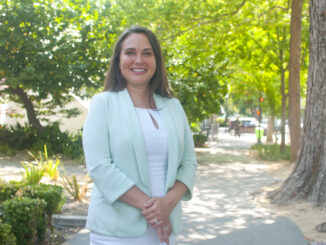
by Anne Stokes
When Kamala Harris gave her victory speech in November 2020, millions of women and girls of color saw something they had never seen before: A leader in the White House who looked like them.
“While I may be the first woman in this office, I won’t be the last,” said the first American woman elected vice president. “Because every little girl watching tonight sees that this is a country of possibilities.”
And there is truth in Harris’ statement. Media and representation play a large part in the formation of children’s future hopes and dreams. A 2018 study by the University College London found that children as young as age 7 base what they want to be when they grow up on who and what they see around them; 36% modeled their goals on people they knew while another 45% of kids were influenced by what they saw on TV, in movies and heard on the radio.
Unfortunately, girls and young women see few role models in a wide range of careers, including science, business and politics. For girls and young women of color, that selection of role models is even slimmer.
“Latina women are the most powerful voting bloc in California and it’s important for young girls and Latina women to see and know this and to recognize the power we possess.”
Samantha Valadez
CNC Education Fund field director
In the 2020 Census count, California’s Hispanic or Latino population accounted for nearly 40% of the state’s population, making up the largest racial or ethnic group for the first time. Advocates with Communities for a New California Education Fund want Latinas to understand the power that can come with being well represented.
“Even when we look at Latino (voters), it’s usually 54% to 46% that Latina women outvote Latino men. When we hear about a Latino majority district, we need to think of a Latina majority, we need to think of Latina power,” says Samantha Valadez, CNC Education Fund field director. “Latina women are the most powerful voting bloc in California and it’s important for young girls and Latina women to see and know this and to recognize the power we possess.”
While many voters dismiss local elections, local politics have the biggest impact on people’s everyday lives. Issues surrounding law enforcement funding, public education, affordable housing and critical infrastructure—that provide clean drinking water, for example—are all under the jurisdiction of local government and beholden to local voters.
To help Latinas amplify their voice, CNC works within communities to educate people about how local governments work and provide training to show them how to organize and make those public agencies address the issues that matter to them.
“Through the grassroots organizing that we do, we form these neighborhood committees,” Valadez explains. “The majority of the people who make up these committees are Latina women. Through these committees, we’re really able to put the issues that they bring to the forefront of the work that we’re doing at CNC.
“They’re proactive and they help us analyze issues in their neighborhoods and organize around these issues to bring about change in the areas they live in,” Valadez adds. “They’re highly involved in how local politics work. We train them on how to attend town hall meetings, city council meetings, how to take one step further and make a public comment, and then after that how to train and prep other women to give public comment. We’re highly involved in participating in the local political process.”
For more information about CNC and how you can get involved, visit www.cncedfund.org or follow then on Facebook, Instagram or Twitter for information and updates.




